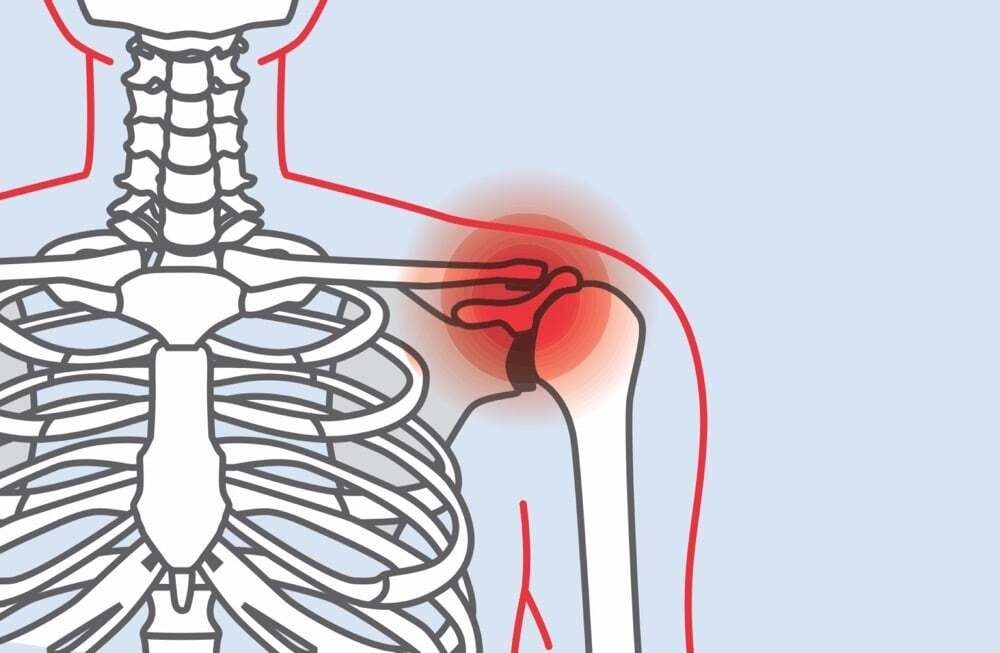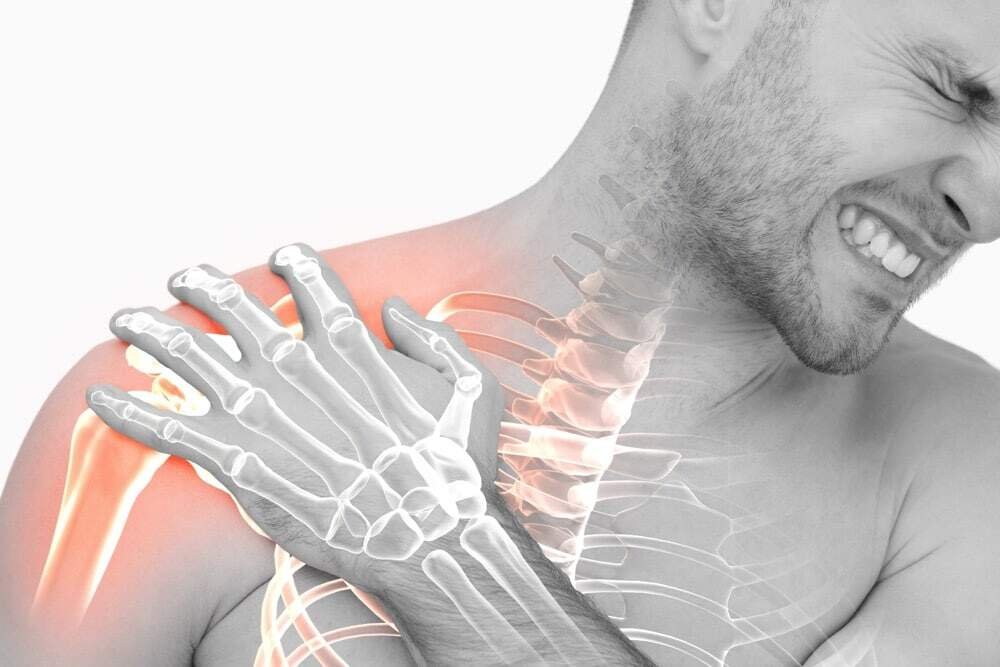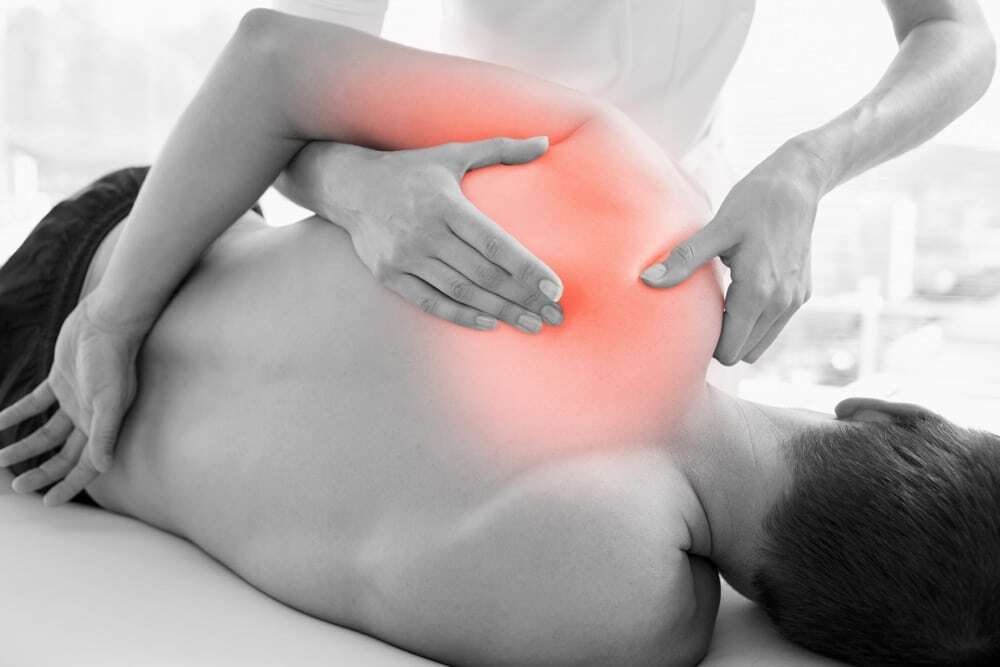The shoulder is the most mobile joint in the body, capable of moving the arms forward, backward, in a circular motion and also laterally away from the body.
Not surprisingly, shoulder pain can significantly affect your quality of life, causing immense pain and discomfort.
Unknown to many persons, the shoulder is actually composed of two separate joints, which means that there is a multitude of locations where pain may originate.
Often times, the source of this discomfort is the rotator cuff; four tendons that allow the degree of motion you are accustomed to.
Damage to these important tendons will inevitably affect multiple facets of your life.
Want to learn more about shoulder pain? Then hop on in and read this guide to the end.
Causes of Shoulder Pain

Rotator Cuff Tendinitis
The most frequent cause of shoulder pain is inflammation of the rotator cuff tendons, which may seemingly occur for no obvious reason. While tendinitis may be acute and short-lived, it may also persist for an extended period of time if steps are not taken to address the issue.
Rotator Cuff Impingement
This occurs when the rotator cuff inadvertently finds itself between a rock and a hard place, or in this case the acromion and humeral head of the shoulder joint. This impingement can lead to transient inflammation and pain, and in some instances may require surgical intervention to correct it.
Repetitive Motion Disorder
Many joints are subjected to repetitive motion, in the case of the shoulder think of the constant movement of the arms in a particular direction. The result of this repetitive movement can be wearing down of the cartilage surrounding the joint, depletion of synovial fluid (the liquid which lubricates joints), or inflammation due to wear-and-tear.
Heart Attacks
When most people think of heart attacks they imagine a severe compressing pain in the chest region, when in reality it can be as subtle as shooting pain that radiates along the neck and shoulder. Of course, the occurrence of other symptoms can help with the diagnosis of a heart attack, so be sure to get to your physician pronto in such an event.
Injury
Without a doubt injuries to the shoulders are the most preventable origin of shoulder pain, but injuries being the way they are, no one sets out hoping to develop one. Athletes are at a significantly higher risk of damaging the shoulder joints from loadbearing movements, such as the clean and press Olympic lift.
Bodybuilders also account for a large percentage of all shoulder injuries, owing to the fact that the pectoralis muscles (chest) share a common insertion point with the shoulder joint, and may contribute to pain without the knowledge of the trainee.
Arthritic Disease
Osteoarthritis and rheumatoid arthritis both pave the way for chronic shoulder pain, owing to the fact that cartilage damage is for the most part irreversible. As this cartilage is worn down, bone rubs upon bone, resulting in swelling and pain at the location.
While arthritis used to be associated with the elderly, rheumatoid arthritis shows no such disparity and can occur in children and teenagers as well, known as juvenile arthritis.
Bone Spurs
Even though bone spurs predominantly occur on the feet, they can affect any joint. Spurs are abnormal bone growth projections that affect normal anatomical movement, and will inevitably impair the normal range of motion.
The movement may become painful, and manifest as inflamed joints.
Symptoms of Shoulder Pain

Generalized Weakness Throughout The Arms
Being attached to the arms, oftentimes pain that originates at the shoulder joint will radiate along the length of that limb, and also affect overall strength and loadbearing capacity. It is not uncommon to feel pain when carrying extremely light shopping bags, or feeling as if your arms are fatigued and unable to carry anything at all.
Tingling Of The Upper Arm
If shoulder pain occurs as a result of a pinched nerve (usually in conjunction with impinged rotator cuffs), you may often sporadically feel tingling or numbness in the upper arm region. If you’ve ever had your arm fall asleep, this is the best way to describe the sensation you feel.
Hypomobility
Being the most mobile joint in the body, anything less than 360 ° movement is abnormal. You may find yourself unable to laterally raise your arms to a level parallel to the ground or may be unable to rotate your arms in a circular motion.
The reason for this lack of mobility? Pain. Human beings are programmed to try to avoid pain, as it gives an indication that something is definitely wrong and should not be pushed.
Swelling
If you can visibly observe swelling of the shoulder joint, you will most likely be in immense pain already. Regardless, inflammation that is highly visible is an indication that something is going on within the joint, which can be confirmed with a detailed history, usually as a result of a recent injury.
Treatment of Shoulder Pain

Treatment modalities for managing shoulder pain differ based on the contributing factors dictating its development. Common treatment approaches include:
Immobilization/Rest
Often times, acute shoulder pain can be rectified given that you do not exacerbate the inflammatory processes in the shoulder. The best way to achieve this is to immobilize the shoulder joint and actively spend more time getting rest.
Owing to the fact that shoulder pain is usually worsened upon movement, it makes sense to avoid doing so in an effort to see if the pain abates.
Application Of Ice
Application of ice to injuries is basic first aid, but a practice which is very effective nonetheless. Icing the area for about 15 minutes every hour slows down inflammatory processes and then kick starts healing.
Professional athletes usually soak in ice baths after a workout or big game to kick start the recovery process and minimize pain.
Over-The-Counter Analgesics
These include the ever popular acetaminophen, ibuprofen, and naproxen, which help to relieve pain and swelling. Usage of these medications should be minimized, however, as they impair the normal inflammatory pathway that initiates healing as well.
Prescription Medication
These may include prescription painkillers, corticosteroids or other medication which can treat symptoms of the pain and inflammation, and also address the underlying issues that may be contributing to its manifestations.
Surgery
Not often indicated, but if anatomical defects have developed (such as spurs or dislocations following an injury) surgery is usually the only way to fix these. Surgery is not a decision you should opt for lightly, so be sure to have a discussion which your specialist to weigh the pros and cons of the procedure.
Shoulder Pain – Summary
The first step in effectively addressing shoulder pain is to try and determine the origin. Doing so allows for greater customization of treatment options, and an overall better prognosis.
If however, your shoulder pain is not resolvable, lifestyle changes along with medication your physician may prescribe can help to minimize the occurrence of symptoms and offset discomfort you may feel upon movement.
Above all else, don’t work your shoulders too hard. Be sure to complement sufficient rest with the intensity of recruitment of this precious joint.
Sources:
https://www.medicinenet.com/shoulder_and_neck_pain_health/article.htm
https://www.healthline.com/symptom/shoulder-pain
https://www.mayoclinic.org/symptoms/shoulder-pain/basics/causes/sym-20050696

